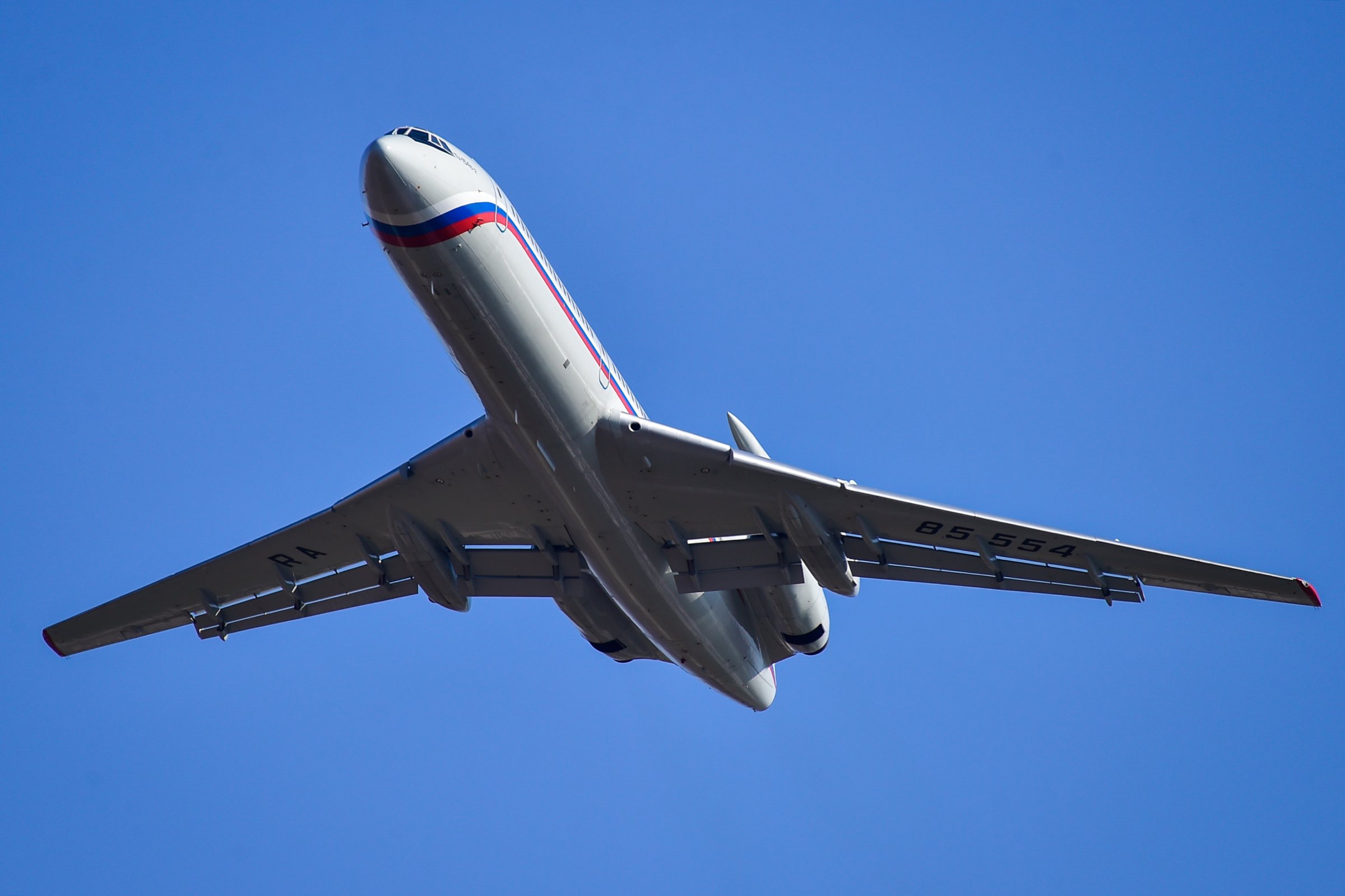
It reads like something out of a conspiracy theory. On Tuesday, Russia sent a surveillance plane over the Midwest, and the U.S. military didn’t do anything to stop it.
Keen observers spotted the plane, a Tupolev Tu-154M, on commercial flight trackers as it entered U.S. airspace on Aug. 11 and flew past Dayton, Ohio and then west over Chicago and Minneapolis.
The story was all picked up by local news outlets, which published spooky headlines like, “Russian spy plane spotted flying over Chicago.”
In fact, the flight was part of the Open Skies Treaty––a 17-year-old program that permits many countries, including Russia and the U.S., to send surveillance flights over each other’s territories each year.
Experts say that’s actually a sign of good will that Russia flies surveillance planes over U.S. territory. And, it might actually make you a bit safer by deescalating tensions between the two nations.
When is a Russian spy plane not actually a spy plane?
Open Skies flights aren’t a secret. Under the terms of the Treaty on Open Skies, both countries are aware of the flights in advance, and there’s a quota for the number of flights permitted. The country being flown over must sign off on the equipment the planes carry.
And the country sending the plane must notify the other country at least 72 hours ahead of the observational flight.
The information that the flights are collecting also isn’t a secret. The countries must provide all the images they collect to all of the other nations on request.
“This is all planned in advance. The Russians can’t just decide willy-nilly that they’re going to fly over Cleveland or Chicago or a missile base,” says Stephen Schwartz, a senior fellow with the non-profit Bulletin of the Atomic Scientists.
What is the Open Skies program?
In March 1992, the United States signed the Treaty with 23 Open Skies countries – including Russia. The countries agreed that they would permit the other countries to send a limited number of observation flights over their territories.
Signed in the aftermath of the Cold War, the treaty, which now has 34 members, was designed for the countries to gather intelligence about each others’ military capabilities, and according to the treaty text, to promote “greater openness and transparency in their military activities and to enhancing security by means of confidence––and security-building measures.”
Most of the former biggest Cold War players are signed on, including the U.S., Russia, the United Kingdom, France, Germany, Poland and Ukraine.
China, Japan and other Asian powers are not involved.
Since the program was put into effect on January 1, 2002, the member countries have conducted more than 1,200 surveillance flights.
Why do we let Russian spy planes fly over the U.S.?
It’s a useful program primarily because it allows both sides to have greater confidence that they are not being fooled by the other.
Schwartz says that the treaty serves two major purposes: reassuring both sides that they are aware of the other’s military and nuclear capabilities, and preventing an arms race generated by fear of the unknown.
According to Schwartz, arms races are wildly expensive and time consuming for both countries, and can lead to a dangerous escalation of tensions or accidents.
“The idea is that we have some confidence and some predictability about what’s going on on the ground, that we can see for ourselves––and they can see for themselves at our facilities,” Schwartz says. “It’s a reassurance that nothing truly nefarious is going on.”
Schwartz says that the treaty can mitigate each country’s concerns about falling behind their adversary, as occurred during the 1950s and 1960s.
“Because of fear and paranoia––and poor to nonexistent intelligence––both sides managed to convince themselves that the other side was doing something extremely dangerous and overcompensated by building all sorts of weapons––and deploying all sorts of weapons that in the end weren’t really necessary,” Schwartz says.
Schwartz says that at this time, there’s renewed cause for concern about escalating tensions between Russia and the United States leading to a new arms race. Earlier this month, the U.S. withdrew from the Intermediate-Range Nuclear Forces (INF) treaty, and there are signs that the New START treaty will not be renewed when it expires in 2021.
Schwartz says that he’s concerned about the loss of restraints on the nuclear programs in the U.S. and Russia. Earlier this month, a small nuclear explosion at a Russian military installation came amid reports that the country is trying to develop new types of nuclear weapons.
“We’re in a very uncertain and, I think, dangerous moment here. And it’s all because of people like [Trump’s National Security Adviser, John] Bolton and his ilk who very want the United States to be able to act freely whenever and wherever we want. And that sort of attitude is not conducive to having a safe and secure world.”
More Must-Reads From TIME
- The 100 Most Influential People of 2024
- The Revolution of Yulia Navalnaya
- 6 Compliments That Land Every Time
- What's the Deal With the Bitcoin Halving?
- If You're Dating Right Now , You're Brave: Column
- The AI That Could Heal a Divided Internet
- Fallout Is a Brilliant Model for the Future of Video Game Adaptations
- Want Weekly Recs on What to Watch, Read, and More? Sign Up for Worth Your Time
Contact us at letters@time.com